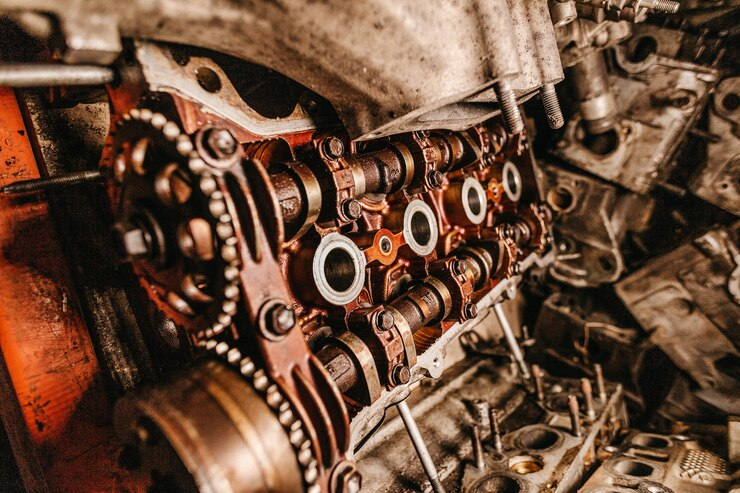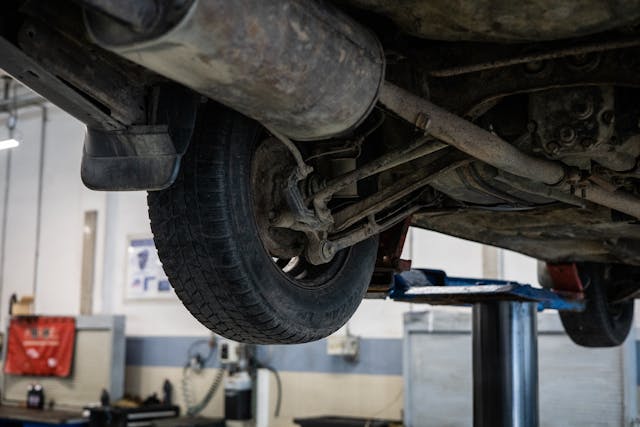Comments
- No comments found

Automobile ownership comes with a diverse range of responsibilities, and the primary and most significant one among them is the upkeep of the structural and mechanical parts of the vehicle.
Engine health and tire condition are crucial to many drivers but what they forget is that rust can also be an obstacle which needs to be tackled. What I mean is that this gradual deterioration does not only reduce the aesthetics of your vehicle, but moreover, it can cause the harming of multiple auto parts.
Rust, or iron oxide, happens when iron-based structures continually interact with oxygen and moisture for extended periods. Talking about automobiles, this is a typical situation as the automobiles are exposed to different weather conditions during runs. While most current-day vehicles typically get the needed treatment to prevent rusting, scratches, or dents, back door exposure to the harsh environment can compromise these protective barriers. A rusted car may be more than just an unsightly blemish. At first the symptoms might be ambiguous as they can just look like an air bubble underneath the paint, color change, or small rust spots. However, these early indicators can quickly escalate if not addressed promptly. For those looking to invest in vehicles, considering SCA - Salvage Cars Auctions could be a strategic move, especially if you're equipped to handle potential rust issues.
The frame, as well as the skeleton and the underbody of a car withstand enormous forces, thereby minimizing the risk for passengers and passengers. Rusting is capable of reducing these parts to a such that they can compromise the vehicle's structural integrity. These tragic consequences, however, are not only a cosmetic problem but a health hazard and this is alarming. At worst conditions, rust could lead to where the frame might break or come off in little parts, which affects a lot of the car's performance and protectiveness in a severe discourse such as a crash.
The penetration of rust causes a failure process of a car's metal parts which is characterized by lowering its thickness and strength gradually. This may distort the vehicle's ability to distribute loads and withstand forces during a crash resulting into severe damage or injuries. Additionally, whether it be the mounting or alignment of the suspension or braking system, the degrading structure may reduce the safety and functionality of the vehicle as a whole. Briefly, rust is a problem because it disrupts the car's structural entity and as a result, it compromises the performance and safety features that should have protected the vehicle's occupants.

The suspension of a car is quite complicated. It has several components such as the coil springs, shock absorbers, and control arms. These elements are needed to give a good balance and a smooth driving experience as well. Rust may progress to destroy new parts that were assembled in order to replace old ones, and thus weaken the suspension system. It causes corrugation which makes the ride rougher, driving precision reduced and the other components of the vehicle excessively worn out.
Rust erodes suspension parts that become a direct cause of wheel misalignment. This arises from faulty suspension parts that cause uneven tire wear, which in turn increases the frequency in which tires are replaced. Moreover, it also reduces the car’s ability to stick to the road, particularly in rainy or slippery conditions. Furthermore the altered suspension components also can fail under regular driving conditions which will lead to unusual and unpredictable vehicle behavior. This can be an issue particularly at high speeds or when driving under stress, therefore increasing the chances of a collision. The result of the shock absorber malfunction is pressure on the car chassis and other structural components which may add to wear and tear and eventually shorten the lifespan of the car.
The braking system is the most important safety feature as far as every vehicle in concern. Rust is a major problem for brakes by eating away the brake lines, calipers, and the chassis which keep the braking system in check. These types of corrosion can cause leakage of brake fluid, reduction in brake performance or even in the ultimate failure of brakes. Rust in the braking system is the issue that has to be dealt with in order to ensure safety of all participants of the road traffic.
Rust is a destructive agent to the braking system, for it is responsible for the decay of rotor and the drum which are indispensable parts of the vehicle to slow down and stop safely. When the rotors and the brake pads become pitted or unsmooth due to rust, the braking power is impeded and longer stopping distances are obtained because of this disturbance in contact between the brake components. This state can be especially worrying in cases of emergency braking, when every second makes a difference. Moreover, the damage caused by rusting not only leads to higher maintenance expenditures, but also contributes to the replacement of the parts before their natural shelf-life. Keeping the brake system rust free is a critical requirement not just for safety of vehicle passengers but also for safety of other road users and pedestrians.
Fuel system is another component that get rusted with time. Tanks, fuel lines, and connectors are the first and the easiest to get corroded. Oxidized collectibles from corroded components can contaminate the fuel and cause the fuel lines and filters to clog, which in turn can result in the engine malfunction or even the complete engine breakdown. Regular appraisals may come in handy in time to prevent the situation from becoming too severe.
Besides fuel delivery system blockage; rust may enter into the system, which triggers degradation of fuel pump and injectors that are the essential components that carry the fuel to the engine at the proper pressure. A rust polluted condition not only degrades the accuracy and effectiveness of these parts but it can also lead to poor fuel economy, inconsistent engine performance and more emissions. The engine can stop to start or stall unexpectedly despite itself if the situation is so critical, which is very important and dangerous especially driving in traffic or speed. Therefore, routine fuel system checks are not only vital for performance maintenance but also for reliability and safety throughout various ride conditions.
The electrical system composed of wires that corrode is another potential source of thermal faults. As a result of corrosion, connections will be poor, short circuits may occur or the electrical elements can malfunction. This could be through seemingly minor inconveniences such as a malfunctioning ignition system or lights, but severe problems like the failure of a firearm or non-responsive critical safety features could also be in the picture.
Rust damage to the electrical system can impact the onboard diagnostics and electronic control units (ECU) which run the car's many vital functions such as engine management, transmission, and safety systems including airbags and anti-lock brakes. Corroded connections or broken wires can cause interference in those systems, hence they give inaccurate notice, wrong warning signs in the dashboard, or maybe there is no response from the critical control systems. This might not only complicate the diagnosis of the problem but also lead to the system’s failure that could result in accidents or leaving drivers alone without any warning. Periodical electrical system checks are necessary to identify and repair rust-caused damages. This is done to ensure that the vehicle's electronics work properly and safely.
The exhaust system, usually more exposed to the elements compared to other car parts, tends to fail faster due to rust. Ultimately, rust may create holes in the exhaust pipes, muffler, and catalytic converters, which impair the performance of the system and allow toxic gases to get into the car cabin.
The development of rust on the exhaust system fast can lead to increased back pressure what has bad impact on engine performance and fuel efficiency. The reason is that the engine should work harder to push out exhaust gases due to a faulty exhaust system which leads to a reduced horsepower and significantly lower overall vehicle performance Moreover, the stainless steel structure of the catalytic converter, which plays a key role in lowering harmful emissions, can be destroyed. This is not only harmful to the environment but can also cause the car to fail emissions tests which are needed in most places for the vehicle to pass roadworthiness. In turn, routine exhaust system inspections and maintenance should be performed to prevent possible rust-causing decay and make the vehicle safe, eco-friendly and road legal.
Nonetheless, rust is much more than only a cosmetic concern; it is the persistent enemy that can affect each part of your vehicle, from its performance and safety to its appearance. Learning about the corrosion lifetime of cars' parts is the key to fight with a never relaxing adversary. By regular vigilance and timely interventions the costs of maintaining those vehicles will be greatly reduced and the driver's safety will be ensured. Just like with rust, when you can prevent the issue, you save yourself a lot of future work.
Felix is the founder of Society of Speed, an automotive journal covering the unique lifestyle of supercar owners. Alongside automotive journalism, Felix recently graduated from university with a finance degree and enjoys helping students and other young founders grow their projects.
Leave your comments
Post comment as a guest